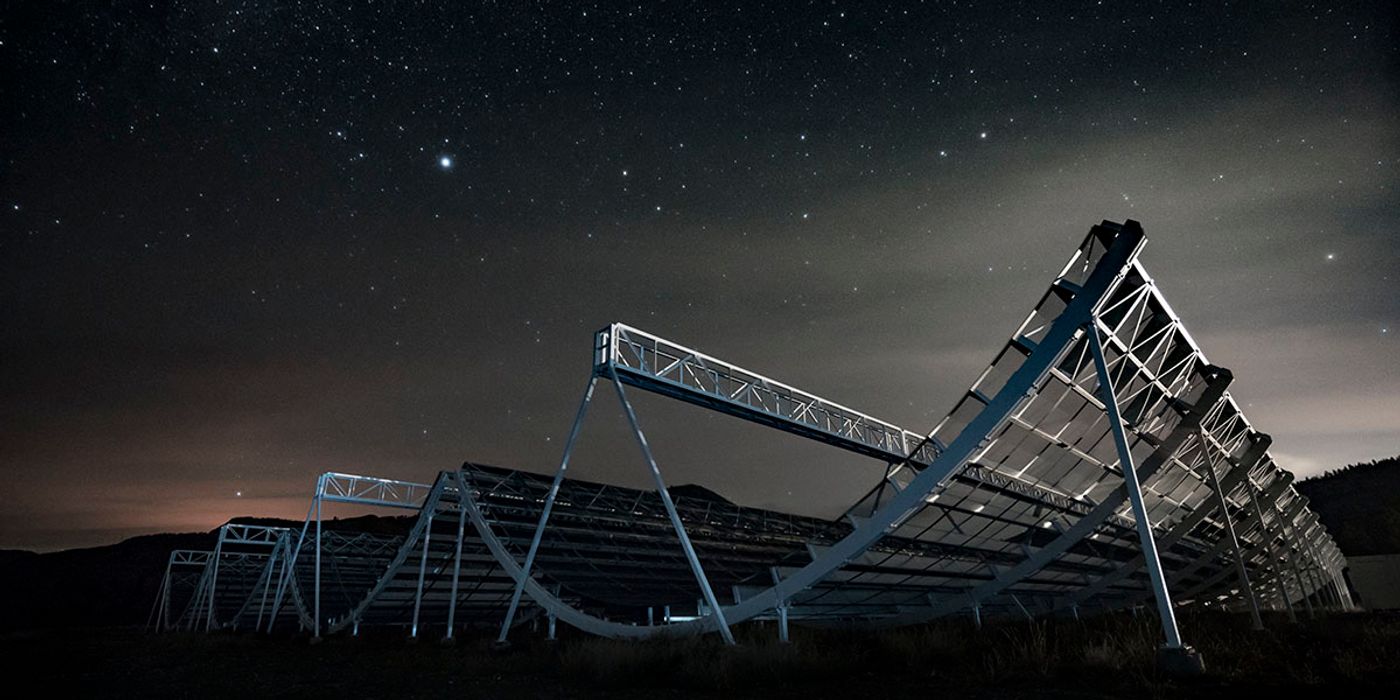Fast Radio Bursts: The Mysterious Cosmic Signals Just Got More Mysterious
Since the first discovery thirteen years ago, fast radio bursts (FRBs), a type of short radio pulses, have been fascinating scientists and civilians alike due to their extragalactic origins and transient nature. While some believe that FRBs are emitted from beacons of extraterrestrial intelligence, radio-astronomers point the birthplace of these signals to high energy celestial events from deep in the cosmo.
These short bursts of electromagnetic radiation attracted a wave of reinvigorated interests recently, thanks to a report published in the journal Nature.
The authors of the paper, the CHIME/FRB Collaboration, are a network of scientists who use the Canadian Hydrogen Intensity Mapping Experiment telescope (Okanagan Falls, Canada) to search for high-frequency radio waves (ranging between 400 and 800 megahertz) from outside our galaxy. By analyzing data collected from September 2018 to February 2020, they discovered that an FRB source, known as FRB 180916.J0158+65, has been repeating about every 16 days, an unusually long periodicity among all detected bursts so far.
LabRoots reached out to Dr. Victoria M. Kaspi, an astrophysics professor at McGill University (Montreal, Canada) and Radio Transient Research expert, for comments on this latest discovery.
"The repeating FRB 180916.J0158+65 is an important discovery. The next question for CHIME scientists is whether this is typical behavior for a repeating FRB, or whether this one source is anomalous. If it turns out to be typical, then yes, it's a massive clue to their nature," Dr. Kaspi commented on the significance of their findings.
A new pattern of mysterious radio signals detected from space (Global News)
First detected in late 2018 (as denoted by its name), FRB 180916.J0158+65 is among the earliest repeating signal sources ever discovered by CHIME. It regularly falls into the telescope's field of view, making a very convenient spot to monitor on a day-to-day basis.
Repeating FRBs are common. Last year, the same group of astronomers reported the occurrence of eight repeating sources. But what makes the striking difference is that FRB 180916.J0158+65 has emitted 38 bursts since its detection, and every burst clocked a period about 16.4 days.
Using the West Virginia-based Green Bank Telescope, the Canadian scientists have also detected bursts from the same source at radio frequencies that were lower than seen by CHIME.
Theories that are proposed to explain the mechanism of FRBs often involve neutron stars in one way or another. And the repeating patterns (anywhere between milliseconds and hours) could have resulted from the spinning of a highly magnetized neutron star, according to hypotheses. However, FRB 180916.J0158+65 has such a long-term periodicity that it cannot match the rythm of any neutron star spinning.
To this end, scientists floated two alternative explanations behind the long periodicity. The pattern could be a result of a neutron star orbiting its massive companion star, or the precession of focused beams emitted from a neutron star.
The observed long-term periodicity could be a one-off case, but many scientists suspect that it might be the norm of FRBs, which can dramatically change the way we look at these mysterious bursts.
"It is a huge clue to the nature of FRBs. Theories for what they are hugely constrained. It also means as observers, we must be very diligent to search for periodicities in repeaters, and it helps observationally in, among other things, sky localization, which can only be done by special types of radio telescopes called interferometers," said Dr. Kaspi.
But to verify such a revolutionary idea could take some time. "Interferometer time is hard to come by, but the periodicity tells the observer when it is best to look! "
"A sky localization then allows us to determine what galaxy the FRB resides in, and hence the distance to the FRB. These are very important for understanding FRBs and using them as novel cosmic tools to study the material between galaxies — the intergalactic medium," she added.
Source: Nature News









